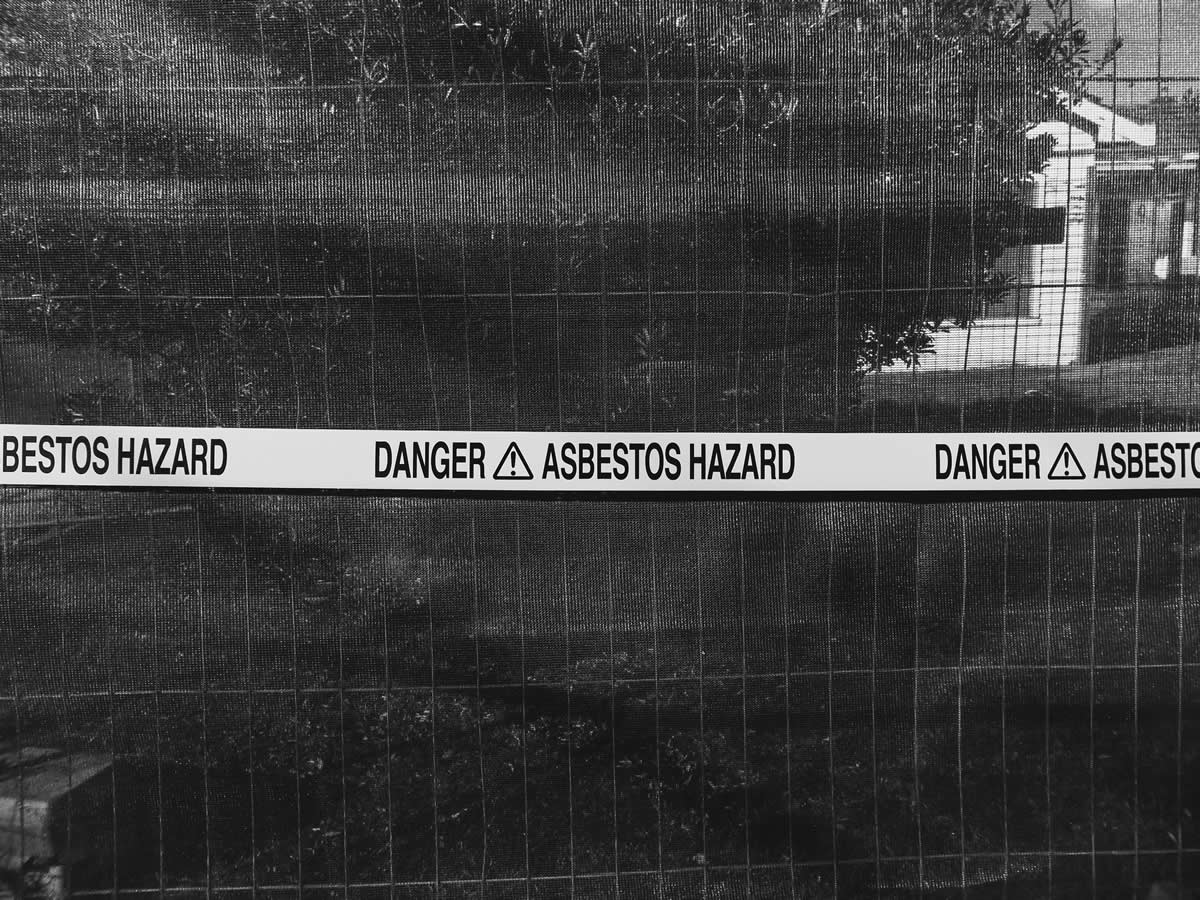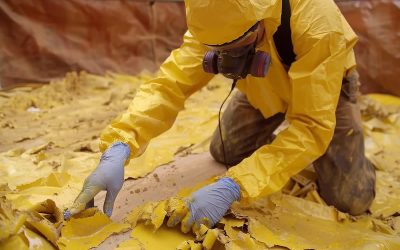If you’re trying to learn more about asbestos—maybe you’ve come across it in your home, or someone’s mentioned it while doing building work—you might be wondering where it actually comes from.
You probably know it’s dangerous, and you’ve likely heard about it being banned. But before all of that, asbestos had to come from somewhere. And once you understand its origins, it makes a lot more sense why it was used for so long—and why it’s still found in so many buildings today.
So let’s get into it. This guide takes you from the source of asbestos deep underground, through how it was mined, to how it ended up in homes, schools, and workplaces across the UK.
What Is Asbestos, Really?
Asbestos isn’t man-made. It’s a natural material. That might sound surprising, especially when you hear about how dangerous it is. But asbestos actually forms in the earth—just like coal, salt, or stone.
It’s made up of tiny, thin fibres that are part of a group of minerals called silicates. These fibres are soft and flexible, but also incredibly strong. They’re resistant to heat, chemicals, and electricity. That’s what made asbestos so appealing to builders and manufacturers for years.
There are several types of asbestos, but the main ones you’ll hear about are:
- Chrysotile (white asbestos)
- Amosite (brown asbestos)
- Crocidolite (blue asbestos)
Each type comes from slightly different rock formations, and they were used for different things. But all of them are now recognised as harmful.
So Where Does Asbestos Actually Come From?
Asbestos is found in natural deposits all over the world. These deposits usually sit in serpentine or amphibole rock—types of rock that have formed under specific conditions like heat, pressure, and moisture deep underground.
Here’s the short version: when water moves through certain kinds of rock, it changes the minerals inside. Over thousands or even millions of years, those minerals grow into long, thin, fibrous crystals. That’s asbestos.
The biggest asbestos deposits are found in places like:
- Russia
- China
- Brazil
- Kazakhstan
- Canada
- South Africa
Back in the day, Canada was one of the biggest producers of asbestos. The town of Asbestos, Quebec was actually named after it. The mines there were massive. At their peak, they produced hundreds of thousands of tonnes of chrysotile each year.
South Africa and Australia also had huge reserves of crocidolite (blue asbestos) and amosite (brown asbestos). These types are particularly dangerous due to the shape and sharpness of the fibres, which can easily lodge in your lungs when breathed in.
Was Asbestos Ever Mined in the UK?
Asbestos wasn’t mined here on a large scale. Most of it was imported from other countries—especially Canada and South Africa.
There were a few small deposits in Scotland, Wales, and parts of England, but they weren’t big enough to support large-scale production. So from the late 1800s onwards, Britain started importing thousands of tonnes of asbestos each year to meet growing demand.
Why Was It Used So Much?
It all comes down to cost, convenience, and performance. Asbestos was cheap to import, easy to work with, and strong. It didn’t burn, didn’t rust, and could insulate buildings from both heat and sound.
For builders and manufacturers, it ticked all the boxes. So you started seeing it everywhere—especially after the Second World War when the country needed to rebuild quickly and cheaply.
Asbestos was used in:
- Roofing sheets and tiles
- Loft insulation
- Pipe lagging
- Wall panels and partition boards
- Floor tiles and adhesives
- Boiler insulation
- Fuse boxes and wiring panels
- Ceiling coatings like Artex
In short, if you lived or worked in a building built before 2000, there’s a good chance some part of it contains asbestos.
The Mining Process—How Did We Get It Out of the Ground?
The way asbestos was mined depended on where it was found and how deep it was buried.
Open-Pit Mining
In places like Canada and South Africa, asbestos was often mined in open pits. Workers would remove layer after layer of rock using heavy machinery, blasting and cutting through the earth to reach the asbestos-containing rock underneath.
Once they hit the right layer, the rock was crushed and processed to separate the asbestos fibres from the surrounding material. Those fibres were then packed up and sent off to factories all around the world—including the UK.
Underground Mining
In other areas, where the deposits were deeper, miners had to dig tunnels underground. This kind of mining was slower and more dangerous. The dust levels were higher, the working conditions were worse, and the risk of exposure was constant.
In both cases, the fibres were so fine they could stay in the air for hours. And workers rarely had protective equipment in the early days. Many of them ended up with long-term health problems as a result.
What Happens After It’s Mined?
Once asbestos is mined, it’s processed and sorted by type and quality. The long fibres were usually considered more valuable because they were stronger and more flexible.
The fibres were bundled into large bales and sent to factories, where they were mixed into other materials. Sometimes they were woven into cloth for fireproof clothing. Other times, they were blended with cement or sprayed onto surfaces.
By the time the finished products reached building sites, the asbestos didn’t look like a mineral at all. It was just another part of the material—hidden and often forgotten.
When Did We Start Using It in the UK?
Asbestos use in Britain dates back to the 19th century. The first big use was in the textile industry, where it was woven into fire-resistant fabrics.
By the early 1900s, it was showing up in factories, boilers, ships, and trains. During the two World Wars, asbestos use exploded. It was used to insulate warships and aircraft. After the wars, it became a go-to material for rebuilding homes and public buildings.
By the 1950s and 60s, it was so common that most new buildings contained at least some asbestos somewhere.
So If It’s Natural, Why Is It So Dangerous?
That’s a fair question. The danger isn’t in the fact that asbestos comes from the earth—it’s in how your body reacts to it.
Asbestos fibres are incredibly small. When they break loose and become airborne, they can be inhaled without you even realising. Once they’re in your lungs, they don’t break down or dissolve. They stay there, causing inflammation, scarring, and sometimes cancer over time.
It’s the shape and size of the fibres that make them so harmful. They can get deep into your lungs and lodge in the tissue, where your body can’t remove them.
The longer you’re exposed—and the more often—it happens, the higher the risk becomes.
What Made People Stop Using It?
For years, the dangers of asbestos were downplayed or ignored. Some health warnings go back as far as the 1920s, but it wasn’t until the 1970s and 80s that public pressure really started to grow.
Scientific studies showed clear links between asbestos exposure and deadly diseases like mesothelioma. By the 1990s, many countries, including the UK, were phasing it out.
In the UK:
- Blue and brown asbestos were banned in 1985
- White asbestos was fully banned in 1999
Since then, all use, import, and sale of asbestos has been illegal. But because it was used for so long, it’s still present in millions of buildings today.
Can You Still Find Asbestos Deposits?
Yes. Asbestos deposits still exist in the ground in many parts of the world. Some countries still mine it, and a few still use it in certain products.
But most countries now understand the risks and have taken steps to stop mining and exporting asbestos.
In places where it’s still legal, the asbestos industry is shrinking. It’s no longer considered safe by most international health bodies, and many companies have moved to safer alternatives.
What Does This Mean for You?
If you’re managing a property, planning a renovation, or just curious about the materials around you, it helps to understand the journey asbestos took to get here.
- It started deep underground, in natural rock.
- It was mined, processed, and shipped across the world.
- It was added to thousands of everyday materials.
- And now, it’s still sitting quietly in homes, schools, hospitals, and offices.
Knowing where it came from doesn’t change the risks, but it helps you see the bigger picture. It reminds you that asbestos wasn’t some accident. It was used for a reason—and now we’re living with the consequences.
Final Thoughts
So where does asbestos come from? It comes from deep inside the earth, formed over millions of years. It was pulled from the ground, shaped by human hands, and placed into the buildings we still use today.
Understanding that journey can help you deal with it better. If you come across materials you don’t recognise—especially in buildings built before 2000—take a moment. Ask questions. Get a proper survey done. And don’t take chances.
You don’t need to panic, but you do need to stay aware. Because the more you understand about where asbestos comes from, the more prepared you’ll be to deal with it safely.
Are you looking for Asbestos Disposal in County Durham? If so, contact us now!










